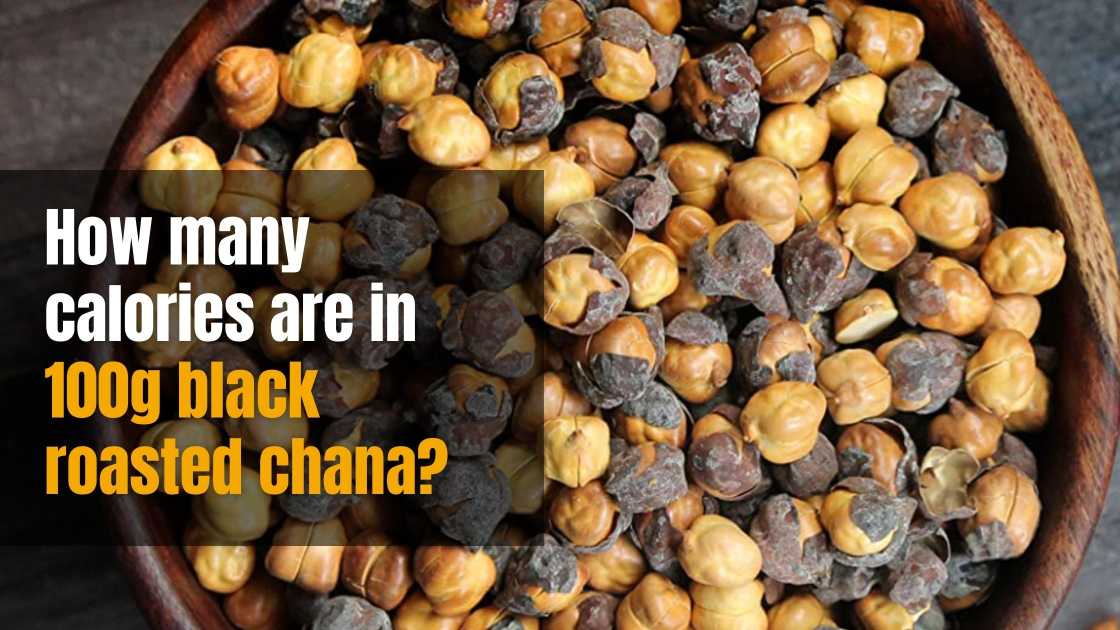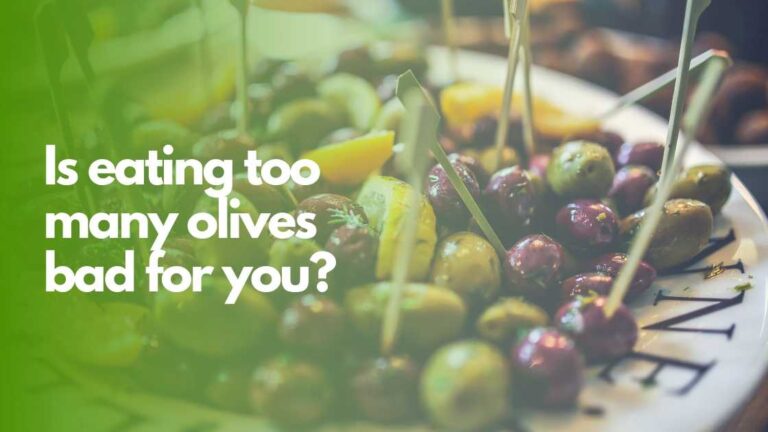Roasted chana, also known as chickpeas or garbanzo beans is a type of legume. For thousands of years, they have been farmed and consumed in Middle Eastern countries.
Their nutty flavor and gritty texture complement a wide variety of dishes and seasonings. Chickpeas, which are high in vitamins, minerals, and fiber, may help you lose weight, improve digestion, and lower your risk of disease.
Furthermore, this bean is high in protein and can be used as a meat substitute in a variety of vegetarian and vegan meals.
In this post, the calorie content of black roasted chana will be discussed so stick around to the end of this post.
What is black chana (Chickpeas)?
Chickpeas (Cicer arietinum L.) are a legume family that includes kidney beans and peanuts. Garbanzo beans are another name for them. They have a creamy texture and a buttery, nutty flavor.
We frequently encounter the Kabuli variety in the United States, which is tan, spherical, and somewhat larger than a pea. The Desi variant is more popular in the Middle East and India. Compared to Kabuli chickpeas, these are smaller, darker, and less spherical.
In Turkey, it was first used 3500 B.C., and in France, it was first used 6970 B.C. They are now grown in over 50 nations. India produces the most chickpeas of any country on the planet.
How many calories are in 100g black roasted chana?
For every 100g of black roasted chana you eat, you are expected to get about 355kcal of calories.
The nutritional content of 100g of black roasted chana is shown in the table below:
| Nutrient | Nutritional Value Per 100g |
|---|---|
|
Energy |
355 kcal |
|
Fat |
6.26 g |
|
Saturated fat |
0.772 g |
|
Monounsaturated fat |
1.504 g |
|
Polyunsaturated fat |
2.65 g |
|
Carbohydrates |
58.58 g |
|
Sugar |
10.33 g |
|
Fibre |
16.8 g |
|
Protein |
18.64 g |
|
Sodium |
852 mg |
|
Cholesterol |
0 mg |
|
Potassium |
845 mg |
If you are worried about putting on weight and hence want to control the calories you take, then you can consider taking black roasted chana.
For 100g of black roasted chana, you get about 16.8g of fiber and 18.64g of protein which contributes to quick satiety.
This thus prevents you from craving for more calories (Black roasted chana contains per 100 g – Calories of 355kcal).
The 355kcal of calories that is provided by 100g of black roasted chana is obtained from the carbohydrate, protein and fat content in the percentages below:
|
Nutrient |
Percentage of Calories |
|---|---|
|
Carbohydrate |
65% |
|
Fat |
15% |
|
Protein |
20% |
Health benefits of chana
Chana is highly nutritious. It contains a range of nutrients such as protein which is important for bone, muscle and skin health.
Here are some of the health benefits of chana, a.k.a chickpeas
Bone health
Chickpeas’ iron, calcium, and other nutrients can all help to maintain a healthy bone structure and strength. Chickpeas can help people prevent osteoporosis by adding protein to their diet.
Blood sugar control
Chickpeas aid with blood sugar regulation. Chickpeas, both canned and dry, have a low glycemic index. This means they are absorbed and digested slowly by your body.
They also include amylose, a slow-digesting kind of starch. Both of these items prevent your blood sugar and insulin levels from rising too quickly. This is beneficial for diabetics.
Aids in digestion
Chickpeas are abundant in dietary fiber, particularly raffinose, a soluble fiber. This is broken down by the healthy bacteria in your gut, allowing your colon to absorb it slowly.
Eating more chickpeas has been shown in studies to make bowel movements smoother and more regular.
Lowers bad cholesterol
In a small 2006 study, participants who ate a diet with increased chickpeas for 5 weeks had lower levels of low-density lipoprotein (LDL), or “bad,” cholesterol in their blood than those who ate a diet with added wheat [source].
The fiber in chickpeas, according to the researchers, may be responsible for the drop in LDL cholesterol. More than just gut health benefits from soluble fiber.
It can lower both your total and LDL (“bad”) cholesterol levels. This reduces your chances of developing heart disease. Adding chickpeas to your diet has been demonstrated to lower overall cholesterol levels in studies.
Contains many nutrients
Chickpeas have a nutrient profile that is second to none.
They have modest calorie content, at 269 calories per cup (164 grams). Carbohydrates account for roughly 67 percent of these calories, with protein and fat accounting for the remainder.
Chickpeas also contain a good quantity of fiber and protein, as well as a variety of vitamins and minerals.
These include; protein, fat, carbs, fiber, manganese, folate, copper, iron zinc, phosphorous, magnesium, potassium, etc.
Keeps you feeling full
Chickpeas provide protein and fiber, which may help you control your hunger. Protein and fiber work together to promote fullness by slowing digestion.
Furthermore, protein may raise your body’s levels of appetite-suppressing hormones. In fact, the filling properties of chickpeas’ protein and fiber may naturally reduce your calorie intake.
Lowers risk of cancer
When you eat chickpeas, your body produces butyrate, a short-chain fatty acid. Butyrate has been shown in tests to aid in the removal of sick and dying cells.
This may reduce your chances of developing colorectal cancer. Other cancer-fighting chemicals found in chickpeas include lycopene and saponins.
Boost mental health
Choline is a vitamin found in chickpeas that aids in the production of key molecules for memory, mood, muscular control, and other brain and nervous system functions.
Anemia
Iron deficiency anemia is caused by the body’s inability to transport oxygen to its cells without iron. Weakness and exhaustion are two of the symptoms. Life-threatening consequences can occur in severe cases.
A cup of chickpeas has 4.7 mg of iron, which can be anywhere from half to one-fifth of a person’s daily intake depending on their needs. It also contains vitamin C, which aids in the absorption of iron by the body.
Risk of eating chickpeas
Raw chickpeas and other raw pulses should not be consumed since they contain toxins and difficult-to-digest chemicals.
Even cooked chickpeas contain complex carbohydrates that can be difficult to digest and cause bloating and pain in the intestine. Slowly incorporate legumes into your diet so that your body becomes accustomed to them.
Chickpeas: How to Cook and Eat Them
They can be purchased dried in a bag similar to beans, soaked in water, and then boiled. You can also get them in a can. In any case, they’re tasty and nutritious.
Hummus
Hummus, a delectable dip made with chickpeas, tahini, lemon juice, and garlic, is made with chickpeas as the main component.
Salads and soups
Whole chickpeas can be added into any salad, soup, or stew.
As a nibble
On a baking sheet, spread a layer of chickpeas. Season with your favorite spices and roast until brown and crispy.
Vegan
Aquafaba, the liquid from canned chickpeas, is a favorite among vegans. It has properties similar to egg whites and can be used as an egg substitute.
What Is the Appropriate Amount of Roasted Chana?
100 grams of chana, or around two bowls of chana, is an optimal quantity to consume on a daily basis. This will ensure that the weight loss effect is maximized, the body’s fiber content is maintained, and the health advantages of chana are fully utilized.
Two bowls of chana a day, on their own or in the shape of a chaat, or with water, provide numerous health benefits and aid in the weight-loss process.
All that stands between you and your target weight is this simple recipe that will help you feel full at any time of day, reducing your desire for unhealthy or junk food. However, before including roasted chana in your daily diet, you should consult a doctor or nutritionist.
Ways To Roast Chana
Despite the fact that roasted chana is readily accessible in stores, there are a few ways to cook it at home. Simply place the entire chana, including the husk, in a pan. Simmer for a few minutes until it is crispy or brown, and then season with spices like hing if desired.
This snack will be tasty, nutritious, and a fun addition to your diet. If gas is not available, a similar technique can be done in the microwave.
Summary
Chana is high in vitamins, minerals, fiber, and protein, making it a nutritious choice. These features may help you manage your weight, blood sugar, and brain health while lowering your risk of chronic diseases like heart disease and cancer.
100g of black roasted chana contains about 355kcal of calories, which is made up of 65% carbohydrates, 20% protein, and 15% fat content.








Leave a Comment